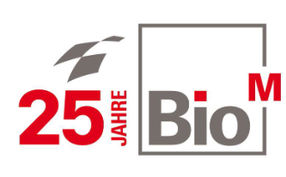Genomic Standards for the Future: Setting the Guidelines
Using the new MIGS standard genomic and environmental data fields can be attributed to the different organisms
The pace of genomic sequencing has increased dramatically in the last years due to new sequencing techniques. At present, more than 1000 complete genomes of single cell organisms (bacteria and Archaea) and 100 Eukaryotes (plants, animals, algae) are available in public genome databases like EMBL and GenBank. Now, an international consortium of scientists has published a new set of rules describing the minimum information and quality criteria for any genomic dataset in the international scientific journal Nature Biotechnology. The new guideline of the Genomics Standard Consortium (GSC) is called "Minimum Information about a Genome Sequence" (MIGS).
Two scientists from the Max Planck Institute for Marine Microbiology in Bremen are in the GSC team which consists of nearly all big database providers and sequencing centers. Prof. Dr. Frank Oliver Glöckner is hopeful: " We have worked now for more than seven years in the field of marine environmental (meta) genomics. The MIGS specifications and standards will be a major step forward in discovering the secrets hidden in the genes of our environmental microorganisms".
The GSC team has put a lot of effort in the development of these new rules, as any new standard will only be accepted by the community, if it can be easily used and facilitates the exchange of data within the community. Like the introduction of the Web internet standards a couple of years ago, the MIGS standard is intended to improve the flow of data in the life sciences.
The major goal of GSC and the institutions running the public genomic databases (e.g. GenBank and EMBL) was to standardize genome information in a way that they are compatible to present and future applications. These requirements are met: anybody with an internet access can scan the genomic data sets. Additional information about the organisms, e.g. description of their habitat or origin, will be stored in MIGS format from now on. At present, these vital information can be retrieved only by manually screening the scientific literature.
Original publication: Dawn Field et al., "The Minimum Information about a Genome Sequence", Nature Biotechnology 2008, 26, 541 - 547.
Topics
Organizations
Other news from the department politics & laws

Get the analytics and lab tech industry in your inbox
By submitting this form you agree that LUMITOS AG will send you the newsletter(s) selected above by email. Your data will not be passed on to third parties. Your data will be stored and processed in accordance with our data protection regulations. LUMITOS may contact you by email for the purpose of advertising or market and opinion surveys. You can revoke your consent at any time without giving reasons to LUMITOS AG, Ernst-Augustin-Str. 2, 12489 Berlin, Germany or by e-mail at revoke@lumitos.com with effect for the future. In addition, each email contains a link to unsubscribe from the corresponding newsletter.














































